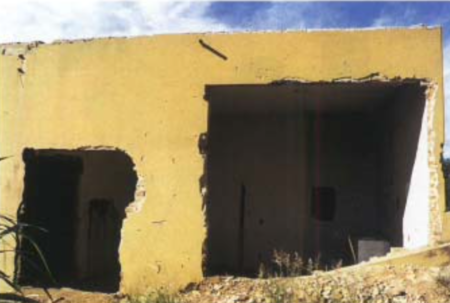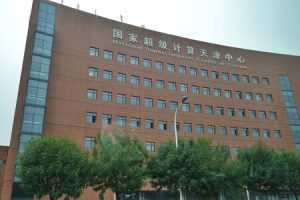Almost all of us have heard of the 1986 Chernobyl accident. A dramatic event that occurred in the final stretch of the Soviet Union that went down in history as the greatest nuclear catastrophe of all time. And that, as if that were not enough, at the beginning of this year he returned to monopolize the media attention in the midst of the Russian Invasion of Ukraine.
Few of us knew, however, that a year after that fateful event, the largest radioactive accident outside a nuclear facility was taking place in Brazil. A disaster that according to the International Atomic Energy Agencyended up killing four people and contaminating more than 250 with radiation.
the glow of death
On September 13, 1987, Wagner Pereira and Roberto Alves, two scrap dealers from the Brazilian city of Goiânia, entered a private clinic that had been abandoned two years earlier in search of metal items that could be taken and later sold. Thus, they loaded their cart with all the pieces they could and left the place.
Once at Alves’ house, the men continued with their usual activities and began to disassemble a machine whose operation they did not know. It was a radiotherapy unit that had been used for cancer treatment and contained 19 grams of caesium-137.
According to Medical News, this type of machine works with highly radioactive sources, such as cesium. The irradiation device is placed on the patient and a collimator rotates to precisely irradiate a certain part of the body for a short period of time.
Meanwhile, Alves sold the parts he had removed from the radiotherapy unit to a city junkyard. According to Ain’t No Way To Go magazineThat same night, the owner of the junkyard, Devair Alves Ferreira, discovered a enigmatic glow in your garage. Captivated by the phenomenon, he thought of inviting his friends and family to watch it.
Goian Institute of Radiotherapy (IGR)
But curiosity got the better of anything else. Thus, Ferreira called a friend to try to open a capsule of the device, but they only managed to pierce the collimator, which allowed them to see inside and extract part of the enigmatic dust. Devair’s brother, Ivo Ferrerira, even took some of the material and placed it on the high table in his house.
The Brazilian newspaper Jornal Opção bill that Leide das Neves Ferreira, Ferreira’s daughter, touched the shiny material while eating, even rubbing it on her skin to show it to her mother. Before long, something strange began to happen in the community. Several neighbors fell ill and, curiously, many of them were hospitalized for presenting several symptoms in common: diarrhea, vomiting, high fever and hair loss.
Gabriela Maria Ferreira, the wife of Devair Alves Ferreira, was the first person to notice a relationship between the pieces her husband had brought home and the outbreak that had just begun. Thinking the capsule might be dangerous, she put it in a plastic bag and boarded a bus to a public health office.
The woman was received by a doctor, who suspected that the capsule could be dangerous and decided to keep it away from himself and the other employees of the place. In this way, according to the Ministry of Science, Technology and Innovation of Brazilphysicist Walter Mendes Ferreira was commissioned to examine the capsule with a scintillation counter, a task that eventually revealed the presence of radioactivity.
From the time the capsule had been removed from the abandoned clinic to the time the problem was discovered, several days had passed. By then, the radioactive material had spread to many places, including the bus Gabriela Ferreira traveled on and the health offices.

Decontamination tasks in Goiânia
Given this scenario, the government took action on the matter. He transformed an empty stadium into a field hospital. More than 110,000 people were tested there, all of whom were believed to be at risk from the accident, but radiation was detected in just over 250 people. Many of them were transferred to hospitals in São Paulo to receive medical treatment.
In relation to the decontamination tasks, these were not easy and required great efforts. First, the authorities confiscated, and in many cases destroyed, the belongings of thousands of people. Various chemicals and vacuum cleaners were used to clean contaminated surfaces and certain houses were demolished.
The tragic outcome and the search for those responsible
Leide das Neves Ferreira, the six-year-old girl, and Maria Gabriela Ferreira, Devair Ferreira’s wife, became the first fatalities of the Goiânia disaster. Both died approximately one month after being exposed to caesium-137 by sepsis and generalized infection, according to The New York Times.

Admilson Alves de Souza and Israel Baptista dos Santos, two employees of the Ferreira junkyard, aged 18 and 22 respectively, also died in 1985. Devair Ferreira, despite having had direct contact with the radioactive source, did not immediately become seriously ill. . According to statements by the president of the Association of Victims of Cesium 137, Odesson Alves Ferreira, to Terra Brasil, the man felt responsible for the accident. For this reason, he fell into depression and began to consume alcohol in large quantities. Fhe finally died of cirrhosis in 1994.
Ivo Ferreira, the father of Leide das Neves Ferreira, also suffered from psychological problems. Overwhelmed by the tragedy, he became a chain smoker. He became ill and died of pulmonary emphysema in 2003. Odesson points out in the interview that although many people did not get sick from radioactivity, the tragedy triggered a social problem that affected many people psychologically.
As for the search for those responsible, the doctors who had owned the abandoned clinic and were in charge of operating it, as well as the hospital physicist, were sentenced to three years and two months in prison, however, served their sentence performing community service. The junk dealers, for their part, were never charged.

The National Nuclear Energy Commission of Brazil, bound by a sentence of the 8th Federal Court of Goiâniatook care of distribute large compensation to victims and guarantee that they and their second and third generation descendants would receive medical and psychological treatment. The Washington Post notes that the International Atomic Energy Agency (IAEA) described the disaster as “one of the worst radiological incidents in the world”.
Images: International Atomic Energy Agency













